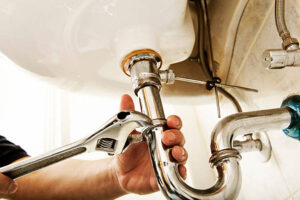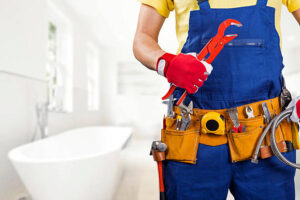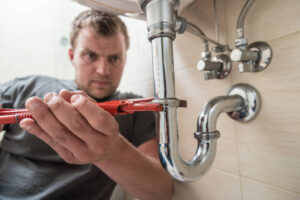Common Mistakes Made in Plumbing Installation and Their Prevention
Proper running of our homes rely mostly on plumbing installation. From simple faucet installation to sophisticated plumbing systems, every step requires great precision. Still, mistakes during the installation process are not rare for either experts or even houseowners. This essay will discuss some common plumbing installation mistakes coupled with some useful tips on how to avoid them.

One of the most crucial aspects of plumbing installation is making sure pipes align correctly. Though it sounds like a straightforward task, even a minor misalignment could result in jams or leaks down the road. During the installation process, use a level and measure precisely to help to avoid this. Proper pipe alignment might help to prevent any water damage and upcoming headaches.
Bad use of sealants and joint treatments is another typical mistake in plumbing installation. These components are supposed to increase the pipe’s and fitting sealing capacity, so providing a watertight connection. Still, it’s more than just a question of wishing for the best and throwing a lot of money. If one desires a consistent seal, following manufacturer instructions exactly is really important. Using the right type of sealant for every connection and applying the right amount will greatly reduce the possibility of leakage.
Undersized pipes are a common mistake made by many plumbers and do-it-yourselfers. Many times, this error comes from ignorance of the water flow and pressure requirements in a given plumbing system. Using pipes too small for the expected flow would cause poor plumbing performance and lower water pressure. To help you avoid this, find the suitable pipe size for your specific need by consulting professional plumbers or reference plumbing codes and suggestions.
About plumbing systems, occasionally appropriate ventilation is overlooked. By allowing air into the system, vent pipes balance the pressure and thereby avoid clogs. Without enough venting, you can have foul aromas, slow draining, or maybe complete obstructions. Lack of venting can particularly lead to issues for fixtures far from the main plumbing stack. See a qualified plumber to assess the venting requirements and ensure your plumbing system is adequately balanced to address this issue.
An other common error that could lead to drainage issues is incorrect pipe slope. Pipes must be correctly sloped to allow gravity to do its job and so promote efficient water flow. Insufficient slope of installed pipes lets water pool and over time create obstructions. Conversely, too fast water flow spurred on by too steep hills could cause noisy plumbing or even pipe breaking. Finding the correct balance is vital, and professional counsel can assist you manage the complexities of obtaining the correct pipe slope.
Though these are only a few examples, mistakes in plumbing installation can encompass a lot. Every residence and every project could present particular challenges; so, it is imperative to change your approach. Knowing the continually shifting area of plumbing and looking beyond the basic standards can help to ensure good installations.
Plumbing installation calls for careful avoidance of common mistakes that could cause costly repairs and inconveniences. Much depends on the time spent planning, researching, and consulting professionals on preventing issues and ensuring a plumbing system functions as it should. Unlocking the secrets to a sturdy and reliable plumbing system calls for cautious and exact navigation of the intricacy of plumbing installation.
 A Complete Guide for Plumbing Installation for New Homeowners
A Complete Guide for Plumbing Installation for New Homeowners
Building a new house mostly hinges on plumbing installation. From control of drainage to assurance of suitable water supply, plumbing knowledge is extremely important. Though not so much as a new homeowner, the world of plumbing may appear scary! This thorough guide will reveal the secrets of plumbing installation and offer you smart analysis to negotiate the complexity of this discipline.
First and most significantly, one should constantly strive higher than a basic knowledge when installing plumbing. Though it looks basic, knowing the subtleties of plumbing will help you prevent issues down road. Armed with information and an adventurous attitude, let us traverse this journey together.
Like a meticulous architect would do, initial steps toward a good installation are planning and design of the plumbing system. Note the appliances, fixtures, and outlets calling for water supply. Analyze the design of your house and map the best pipe paths. This specially designed method ensures effective water distribution and functionalism.
Get ready with the necessary tools; now, your plan is in place and it is time. You should always carry these simple ones:
Pipe cutters used in trimming to specific lengths Changeable wrenches enable one to tighten and loosen fittings. Plumber’s tape ensures perfect connections free from leaks. Pliers for moving around and pipe gripping. Watertight sealing is made possible using teflon tape.
It’s time now to decide on the appropriate pipes and materials to support your plumbing system. Common decisions with corresponding advantages include copper and PVC pipes. Although copper pipes offer longevity and durability, PVC pipes are more reasonably priced and easy to handle. Make sure you always select pipes suitable for the intended use.
First install water supply lines; they will bring water to many outlets in your residence. From the main water supply valve, work your way nearer each appliance or fixture. Using appropriate fittings and connectors guarantees leak-free connections. Recall as you proceed through this process that information accuracy is really important.
Avoiding foul smells and backups entirely depends on proper ventilation and drainage. Install drain pipes such that they slink down to create smooth water flow. Add vents to also let air into the system and stop suction. Remember a well-ventilated plumbing system is a content plumbing system!
It’s time to now connect your fixtures and appliances to the plumbing line. From sinks and toilets to washing machines and water heaters, each demands for careful installation. Review close relationships and follow manufacturer instructions. Remember, just as much as utility, the visual appeal of a house counts.

Once the plumbing installation is completed, testing and inspection of it is best done. Starting the water supply, search for any anomalies or leaks. Especially pay close attention to joints, fittings, and connections. By now a cautious review can help to avoid issues down road.
Right in the middle among the walls, flooring, and ceilings of your new house are plumbing system secrets to a healthy living environment. By means of a thorough, step-by–step guidance, revealing these secrets guarantees a sturdy and consistent plumbing installation.
Remember, learning the ins and outs of plumbing may appear intimidating as a new homeowner; yet, with determination and a little bit of fun you will overcome any challenge. Prepare, choose your tools, and then begin this always shifting journey into the realm of plumbing installation. Your house deserves nothing less than the utmost care and attention; this book will allow you to handle every plumbing task that presents itself.

